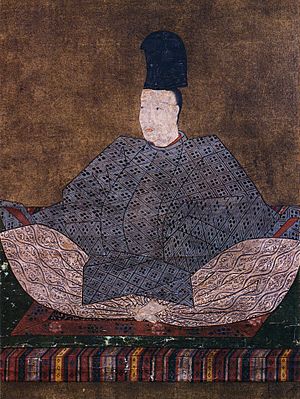Shōchō facts for kids
Shōchō (正長) was a special way to name years in Japan, like how we use "2023" or "2024" today. These year names are called nengō (年号). The Shōchō period came after the Ōei era and before the Eikyō era. It lasted from April 1428 to September 1429. During this short time, two emperors ruled Japan: Emperor Shōkō and Emperor Go-Hanazono.
Contents
Important Events of the Shōchō Era
This era saw some big changes in Japan's leadership.
A Shogun's Passing
- February 3, 1428 (which was the 18th day of the 1st month in Shōchō 1): The Shogun Ashikaga Yoshimochi passed away. He was 43 years old. A Shogun was a powerful military leader who ruled Japan for the emperor.
The Emperor's Death
- August 30, 1428 (the 20th day of the 7th month in Shōchō 1): Emperor Shōkō died. He was 27 years old.
A New Emperor Begins His Reign
- September 8, 1428 (the 29th day of the 7th month in Shōchō 1): Emperor Go-Hanazono became the new emperor. He was only 10 years old when he took the throne! This is called the Imperial succession.
Related Pages
- Muromachi period
- You can learn more about the Japanese calendar and its history from the National Diet Library here.

All content from Kiddle encyclopedia articles (including the article images and facts) can be freely used under Attribution-ShareAlike license, unless stated otherwise. Cite this article:
Shōchō Facts for Kids. Kiddle Encyclopedia.

